- Your Call
- Canon Tripod Mount Ring D for IS 100mm f/2.8L Macro Lens
- The Lightweight Gitzo GT1542T 4-section Traveler Tripod
- The Art of Flower Photography
- A Creative Adventure/BIRDS AS ART/Tulips & A Touch of Holland Instructional Photo-Tour (IPT)
- Selling Your Used Photo Gear Through BIRDS AS ART
- IPT Updates and Info
|
This image was created on April 24, 2014 on last spring’s Tulips and a Touch of Holland IPT at Keukenhof Gardens with the Gitzo GT1542T tripod, the Mongoose M3.6 head, the Canon EF 100mm f/2.8L Macro IS USM lens, and the Canon EOS 5D Mark III. ISO 800. Evaluative metering +1 stop as framed: 1/500 sec. at f/2.8 in Av Mode. AWB. One sensor above the central sensor/single point/Rear Focus/AI Servo AF on the the tip of the pistil as framed was active at the moment of exposure. Click on the image to see a larger version. Image #1 |
Your Call
I really liked the damaged, broken-down tulip featured in the two similar images presented here, one above, one below. I created about 30 images each with a slightly different composition and/or at a different aperture. I wound up keeping these two verticals and a single horizontal. I did not like any of the images created at small apertures like f/16 or f/22.
1- Of the two horizontals here, the one above and the one below, which is the stronger image? Let us know why you made your choice.
2- Which image design is more pleasing? Be sure to let us know why.
3-Does either image convey a specific mood? Explain your answer.
|
This image was also created on April 24, 2014 on last spring’s Tulips and a Touch of Holland IPT at Keukenhof Gardens with the Gitzo GT1542T tripod, the Mongoose M3.6 head, the Canon EF 100mm f/2.8L Macro IS USM lens, and the Canon EOS 5D Mark III. ISO 800. Evaluative metering +1 1/3 stops as framed: 1/100 sec. at f/5.6 in Av Mode. AWB. Central sensor/single point Rear Focus AI Servo AF on the the tip of the pistil and re-compose slightly. Click on the image to see a larger version. Image #2 |
Canon Tripod Mount Ring D for IS 100mm f/2.8L Macro Lens
Because the 100 macro does not come with a tripod collar, those of you who own the lens are likely wondering “How does he get the 100 macro onto a Mongoose?” The answer is simple. I purchased the right tripod collar as a Canon accessory. In general it is not a good policy to mount the camera onto a ball head with the lens hanging from the front of it and stressing the lens mount. I prefer using the Mongoose for my flower photography for a variety of reasons so once I learned of the Canon Tripod Mount Ring D for IS 100mm f/2.8L Macro Lens I made it a point to get my hands on one asap and to bring it to Holland. And I did.
I tried the much cheaper ($49.95 as compared to $172.00) Vello Tripod Collar D (Black) for Canon EF 100mm f/2.8L IS USM Macro Lens but it pretty much turned out to be junk. It was very difficult to loosen and open it and very difficult to get it on the lens and tighten it. So I went with the Canon version. In general, you get what you pay for.
The Lightweight Gitzo GT1542T 4-section Traveler Tripod
I have owned this tripod for about a year now. For the most part, I use it mostly to hold the LensAlign Mark II when micro-adjusting my lenses. On a whim, I packed it in one of my two checked bags for the Holland trip along with my workhorse Gitzo 3532 tripod. I have been rehabbing my right shoulder for more than a decade…. Yesterday I decided to go super-light with the tiny tripod and the Mongoose. Lord was I pleased. I used the 300 II with the 2X III TC and using good sharpness techniques on my part I was able to make sharp images at shutter speeds below 1/100 sec. And my shoulder felt great after the 5 hour photo session.
Because the Gitzo GT1542T will be top heavy with pretty much any camera and lens mounted on it, it is imperative that you never ever leave your tripod unattended, even for an instant. If you do lots of flowers and/or work with an intermediate telephoto lens and you like lightweight stuff, the Gitzo GT1542T tripod might just be perfect for you. Click here to read my probably too honest evaluation. As for me, I am sold on it for flower photography. More coming soon.
|
The Art of Flower Photography, a 203 page eBook/a link to the PDF will be sent via e-mail: $29.00. |
The Art of Flower Photography
Denise Ippolito and Arthur Morris are proud to announce the publication of The Art of Flower Photography, a 203 page eBook with more than 140 images: $29.00. A link to the PDF will be sent via e-mail. Get yourself a copy today so that you can learn and be inspired by the tour de force of flower photography how-to books. Purchase by clicking here, by calling BIRDS AS ART at 863-692-0906, or by sending a Paypal to us via e-mail.
Notice for i-Pad Users
It is easy to save and access any and all PDF files including The Art of Flower Photography and The Art of Bird Photography II on an i-Pad. Here is a link to a short easily-followed how-to tutorial: i-Pad PDF Tutorial.
Gerbera Daisy. Image copyright 2014: Denise Ippolito/A Creative Adventure.Simply put, Denise Ippolito is a talented artist. |
A Tour de Force
tour de force (ˈto͝or də ˈfôrs/) noun: an impressive performance or achievement that has been accomplished or managed with great skill. “The Art of Flower Photography is a tour de force.”
Tulip field horizontal pan blur. Image copyright 2014: Arthur Morris/BIRDS AS ART.Like many of his bird photographs, artie’s flowers images tend to be colorful, bold, and graphic. Both he and Denise love creating pleasing blurs. Learn more in their first eBook, A Guide to Pleasing Blurs. |
The Project
Conceived by Denise Ippolito, six months in the making, The Art of Flower Photography is a summital achievement, the results of many hundreds of hours of effort. Thanks to Carol Carson for her careful review of the manuscript.
|
The Index of The Art of Flower Photography. |
What You Will Learn?
In short, you will–as a glance at the eBook’s index above shows, learn everything about flower photography that you wanted to know but were afraid to ask.
We cover lens, gear, and accessory selection, in-the-field techniques, image design and composition, understanding and using the light, getting the right exposure, aperture choice and depth-of-field, focusing techniques, and a variety of post processing and Photoshop techniques. Among others.
Part of the strength of this eBook is that though both denise and artie produce beautiful and inspiring images on a consistent basis, they often use different lenses and different techniques to achieve their visions. In The Art of Flower Photography you get to pick the brains of two very fine photographers.
Backlit Tulips, Lisse, Holland. Image copyright 2014: Denise Ippolito/A Creative Adventure.Denise is as skilled and creative in a field of flowers as she is at the computer and in Photoshop. She has a knack for seeing and finding great images that others walk right by…. |
Author Backgrounds
Denise Ippolito
Denise has been involved with flowers for much of her life. She is a fifth generation florist who owned and operated a successful flower shop. Subsequently, she then ran first one and then another garden center for the next ten years. Denise has since become a skilled flower photographer; and she has succeeded admirably. Her incredibly creative mind led her to experimenting with both in-the-field techniques and creative post processing effects using Photoshop and several plug-in applications to create the artistic flower renditions that are presented in this eBook.
Arthur Morris
Arthur is a world renowned photographer, and a member of Canon’s “Explorers of Light” program. Although Artie is perhaps best known for his superb bird photography, with thousands of his images gracing the pages of numerous books, magazines, and other publications, he has recently extended his subject matter by redirecting his lenses to capture images of flowers that emphasize their form, pattern, and texture.
Red Tulip. Image copyright 2014: Arthur Morris/BIRDS AS ART.On average, artie works with longer focal length lenses than denise when photographing flowers. In the new eBook, he shares the techniques that he has developed for using super-telephoto lenses for flower photography. This image was created with the Canon EF 600mm f/4L IS II USM lens and the Canon EOS 5D Mark III. |
The Team
The Art of Flower Photography combines the creative energy, the technical proficiency, and the artistic visions of Denise Ippolito and Arthur Morris. Together they form a dynamic teaching team that lectures and conducts seminars and workshops across the country and internationally. They are both multiple award winning photographers who specialize in making world class images of birds, flowers, wildlife, the natural world and Urbex subjects.
The First Reviews
The first reviews are in. From Carol Carson via e-mail:
Inspiration and instruction from two experts with different shooting styles–how can you top that? Denise and Artie have produced a must-have addition to the flower photographer’s eLibrary.
A blog comment by Art Buesing:
Artie and Denise have outdone themselves with “The Art of Flower Photography.” Gorgeous photos with careful explanation of the production technique for camera and computer. A valuable addition to my photography library!
|
Denise and artie hope that you can join them next spring in Holland and learn to improve both the technical and creative aspects of your flower (and street) photography. |
7 1/2-Day/8-Night: A Creative Adventure/BIRDS AS ART/Tulips & A Touch of Holland Instructional Photo-Tour (IPT)
Keukenhof—Delft—Amsterdam–Flower Fields—Kinderdijk
April 9 -April 16, 2015: $4995. Limit: 12 photographers/Openings 10. Four more to make the trip a go.
This trip is a go.
Join Denise Ippolito, the author of “Bloomin’ Ideas,” and Arthur Morris, Canon Explorer of Light Emeritus, for a great trip to Holland in mid-April 2015. Day 1 of the IPT will be April 9, 2015. We will have a short afternoon get-together and then our first photographic session at the justly-famed Keukenhof. Our last day, Day 8, April 16 will be a full day of photography.
The primary subjects will be tulips and orchids at Keukenhof and the spectacularly amazing tulip, hyacinth, and daffodil bulb fields around Lisse and points north. We will spend one full day in Amsterdam. There will be optional visits to the Van Gogh Museum, the Anne Frank House and/or the Rijk’s Museum. Street photography and sightseeing will be other options. We will spend a half day at Kinderdijk where we will be photographing the windmills and doing some creative photography. We will spend an afternoon in the lovely Dutch town of Delft where we will do some street photography and shopping. There is an optional church tower tour/climb. We will also enjoy a superb fine dining experience in a traditional restaurant.
Other than the arrival date: April 9, Day 1, and the date of our last day of photography on April 16, Day 8, there is no set itinerary. We will check the weather and play everything by ear to maximize the photographic opportunities. We will try to do Amsterdam, Delft, and especially Kinderdijik, on cloudy days.
There are several huge pluses to this trip. First off, denise is an amazingly skilled and caring instructor. Both her creativity and her willingness to share and to help beginning and intermediate photographers are unmatched. And though artie has learned a ton about flower photography from denise, their styles and techniques do vary considerably. You will have a chance to be counseled by and to learn from both of them. While denise will hunt you down to help you, artie’s teaching style is more “the closer you stay to me, the more you will learn.” Both leaders consistently inspire the participants. And each other. The sky, of course, is the limit.
You will learn to create tight abstracts, how best to use depth-of-field (or the lack thereof) to improve your flower photography, how to get the right exposure and make sharp images every time, how to see the best shot, and how to choose the best perspective for a given situation. And you will of course learn to create a variety of pleasingly blurred flower images. If you bring a long lens, you will learn to use it effectively for flower photography. Denise’s two favorite flower lenses are the Canon EF 100mm f/2.8L Macro IS USM lens and the Canon EF 24-105mm f/4L IS USM lens. Mine are the Canon 100mm f/2.8L IS macro , the Canon EF 180mm f/3.5L Macro USM lens ,and the Canon EF 300mm f/2.8L IS II USM lens, all almost always on a tripod. Often with extension tubes and/or either the 1.4X or the 2X (with the 300 II) teleconverters. Denise hand holds a great deal of the time. For flower field blurs denise uses the same lenses mentioned above along with her new 70-200mm f/2.8L IS III lens. Artie’s favorite is that same 70-200 often with a 1.4X TC but he uses both the new Canon EF 24-70mm f/2.8L II USM lens and the 300 II as well. Both of us use and love the Canon EOS 5D Mark IIIfor all of our flower photography. The in-camera HDR and Multiple Exposure features are a blast.
One of the great advantages of our trip is that we will be staying in a single, strategically located hotel that is quite excellent. Do note that all ground transfers to and from Schipol Airport will be via the free hotel shuttle bus.
What’s included: Eight hotel nights. All ground transportation except for airport transfers as noted above. In-the-field instruction and small group image review and Photoshop sessions. All meals from dinner on Day 1 through dinner on Day 8. There is good food at the hotel and we will be dining there on occasion; whenever you order off the menu be it at the hotel or at another restaurant only the cost of your main course is included. On these occasions the cost of soups, appetizers, salads, sodas and other beverages, alcoholic drinks and wine, bottled water, and desserts are not included. Snacks, personal items, phone calls, etc. are also not included. The cost of bus or train transportation to and from Amsterdam (about $20 US), museum entry, and tower and church entry fees (optional) are likewise not included.
Beware of seemingly longer, slightly less expensive tours that include travel days and days sitting in the hotel doing nothing as part of the tour. In addition, other similar trips have you changing hotels often and needlessly. One final note on other similar trips: the instructors on this trip actually instruct. On other similar trips the instructors, though usually imminently qualified, serve for the most part as van drivers and van door openers.
A non-refundable deposit of $1,000 per person is required to hold your spot. The second payment of $2,000 is due by October 30, 2014. The balance is due on January 15, 2015. Payments in full are of course welcome at any time. All payments including the deposit must be by check made out to “Arthur Morris.” As life has a way of throwing an occasional curve ball our way, you are urged to purchase travel insurance within 15 days of our cashing your check. Artie uses and recommends Travel Insurance Services. All payments are non-refundable unless the trip fills to capacity. In that case, all payments but your deposit will be refunded. If the trip does not run every penny will of course be refunded. Again, please do not purchase your air tickets until you hear from us that the trip is a go. We are very confident that it will.
A single supplement is available for $1120. Payment in full for the single supplement is due with your deposit. If you want a single room, you deposit check should be for $2120.
All checks should be made out to “Arthur Morris” and sent to: Arthur Morris, PO Box 7245, Indian Lake Estates, FL 33855. Call Jim or Jen in the BAA office with any additional registration questions: 863-692-0906.
For couples or friends signing up at the same time for the tulip trip, a $200/duo discount will be applied to the final payment.
When you send your deposit check, please print, sign, and include the paperwork here.
If you have any questions on the trip please contact artie by e-mail or denise by e-mail.
Used Photography Gear for Sale
Though have sold a boatload of great gear recently, there are still some great buys available. Click here to see the complete listings. Below is today’s featured item.
Used Canon 800mm f/56L IS USM Lens
Multiple IPT veteran and good friend Mike Gotthelf, is offering a used Canon EF 800mm f/5.6L IS USM lens in excellent + condition for $8850. The lens is like new except for some very minor wear on the finish. The sale includes the leather hood, the original hard case and key, a low foot, a LensCoat, and insured shipping via UPS Ground to US addresses only. Personal checks only; your new lens will be shipped only after your check clears.
This great lens, my favorite super-telephoto for more than 3 years, sells new at B&H for $13,999.00. B&H is asking $11,399.95 for a used one here in the same condition as Mike’s. They recently dropped their price for this lens from $11,999.90…. Buy Mike’s lens and save $2456.95 right now! It will save you a ton of dough and you will have a super-sharp lens with lots of reach. And it works great with a 1.4X TC too with all pro bodies and with the 5D Mark III.
Interested folks can contact Mike via e-mail or by phone at (978)-407-0679 (eastern time).
Selling Your Used Photo Gear Through BIRDS AS ART
Selling your used (or like-new) photo gear through the BAA Blog or via a BAA Online Bulletin is a great idea. We charge only a 5% commission. One of the more popular used gear for sale sites charges a minimum of 20% plus assorted fees! Yikes. The minimum item price here is $500 (or less for a $25 fee). If you are interested please e-mail with the words Items for Sale Info Request cut and pasted into the Subject line. Stuff that is priced fairly–I offer free pricing advise, usually sells in no time flat.
IPT Info and Updates
The 4-DAY Bosque IPT is sold out but the Bosque Creative IPT has room. And there is lots of room on the Tulips/A Touch of Holland IPT as well. The first Palouse IPT is sold out with a long waiting list but there is some room on the 2nd one. The next UK Puffins and Gannets IPT is already half filled. Lastly, if you would like to join me on a great Southern Oceans Expedition that includes Antarctica, South Georgia, and the Falkland, please contact me via e-mail.
Click here for details on all of the above trips and for general IPT info.
Support the BAA Blog. Support the BAA Bulletins: Shop B&H here!
We want and need to keep providing you with the latest free information, photography and Photoshop lessons, and all manner of related information. Show your appreciation by making your purchases immediately after clicking on any of our B&H or Amazon Affiliate links in this blog post. Remember, B&H ain’t just photography!
Amazon Canada
Many kind folks from north of the border, ay, have e-mailed stating that they would love to help us out by using one of our affiliate links but that living in Canada and doing so presents numerous problems. Now, they can help us out by using our Amazon Canada affiliate link by starting their searches by clicking here. Many thanks to those who have written.
Typos
In all blog posts and Bulletins, feel free to e-mail or to leave a comment regarding any typos, wrong words, misspellings, omissions, or grammatical errors. Just be right. 🙂

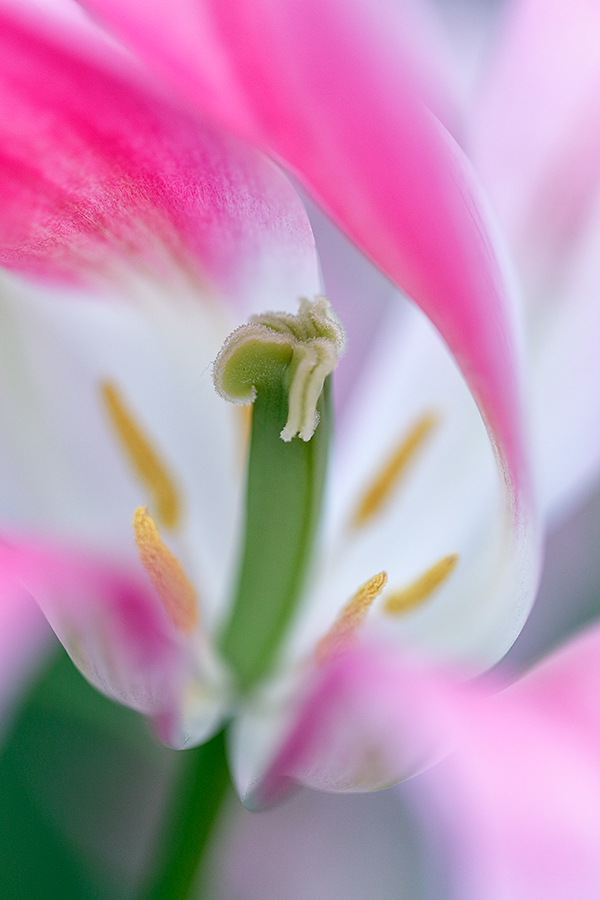
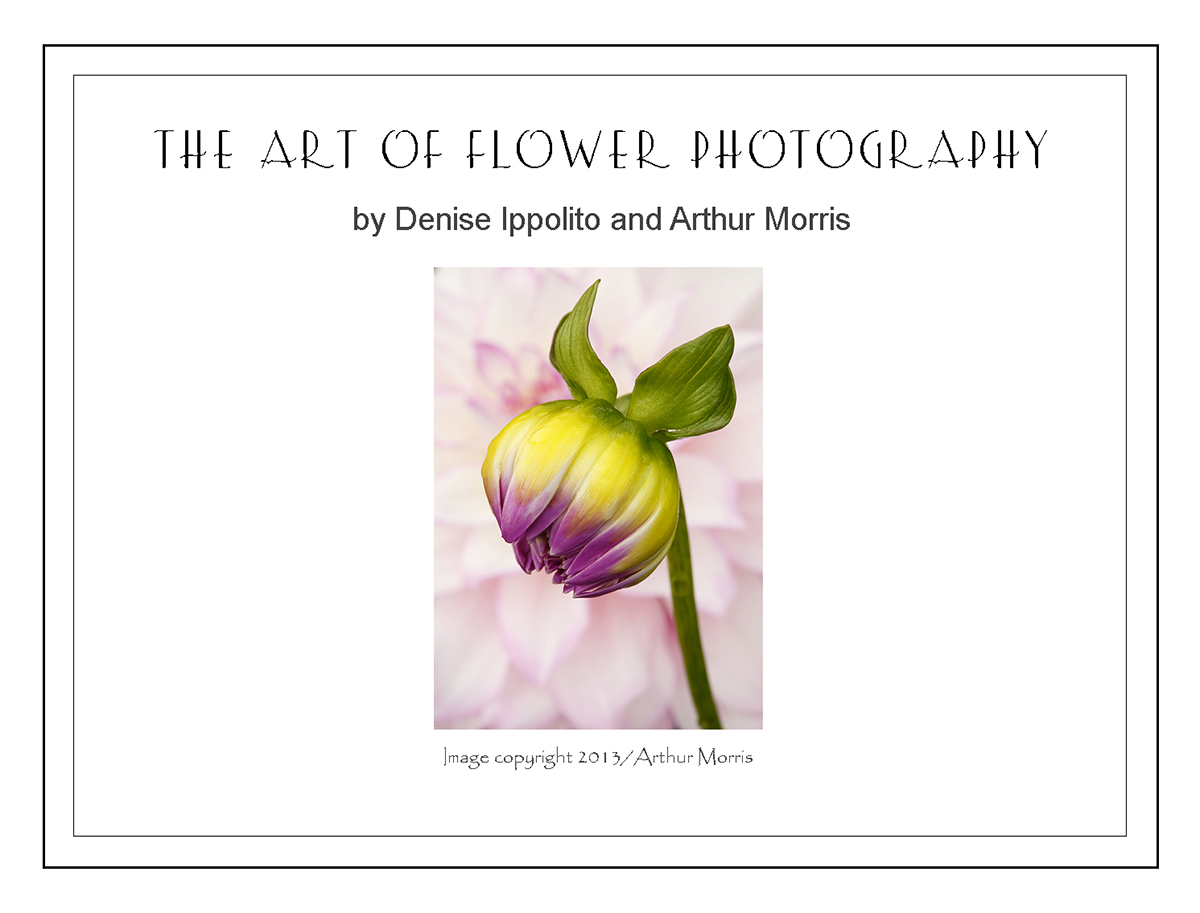
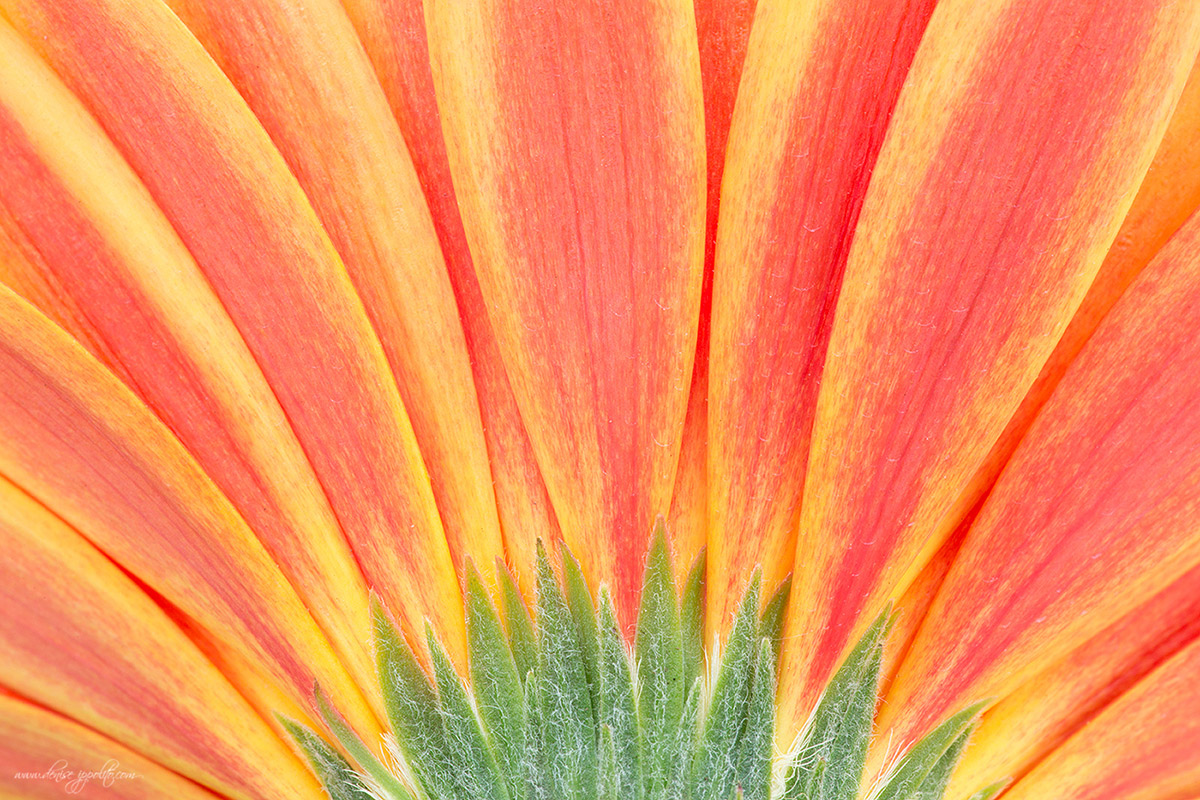
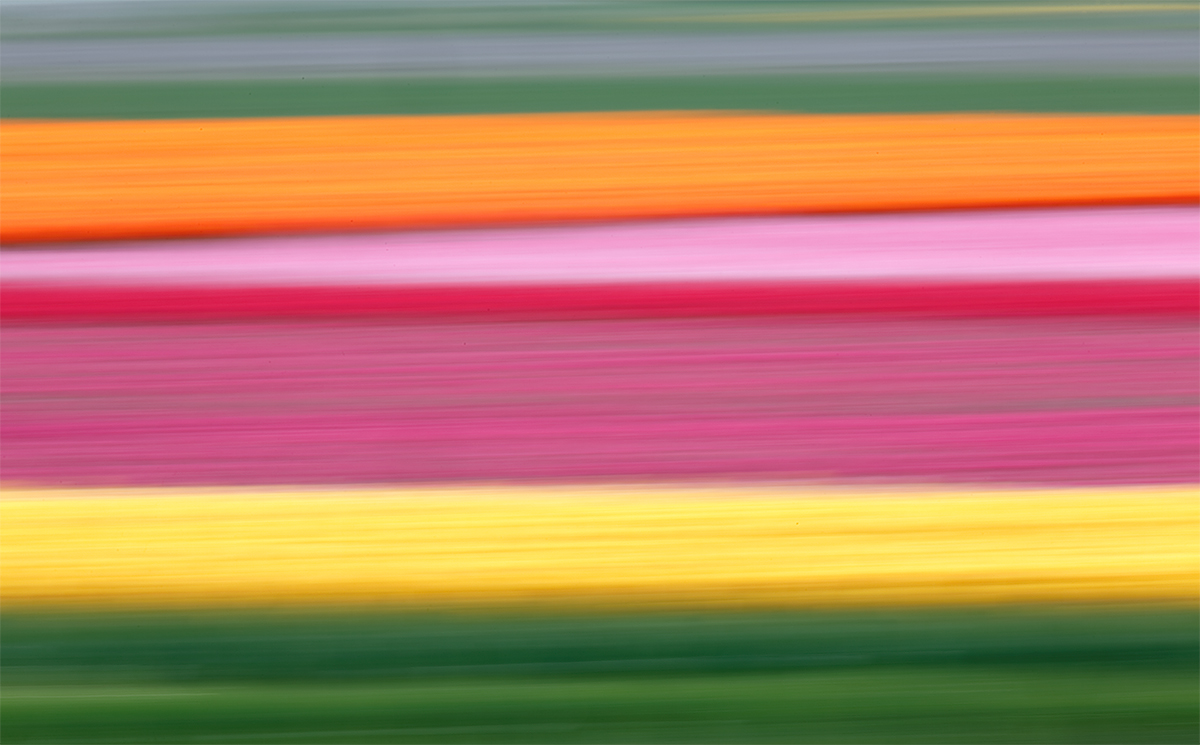
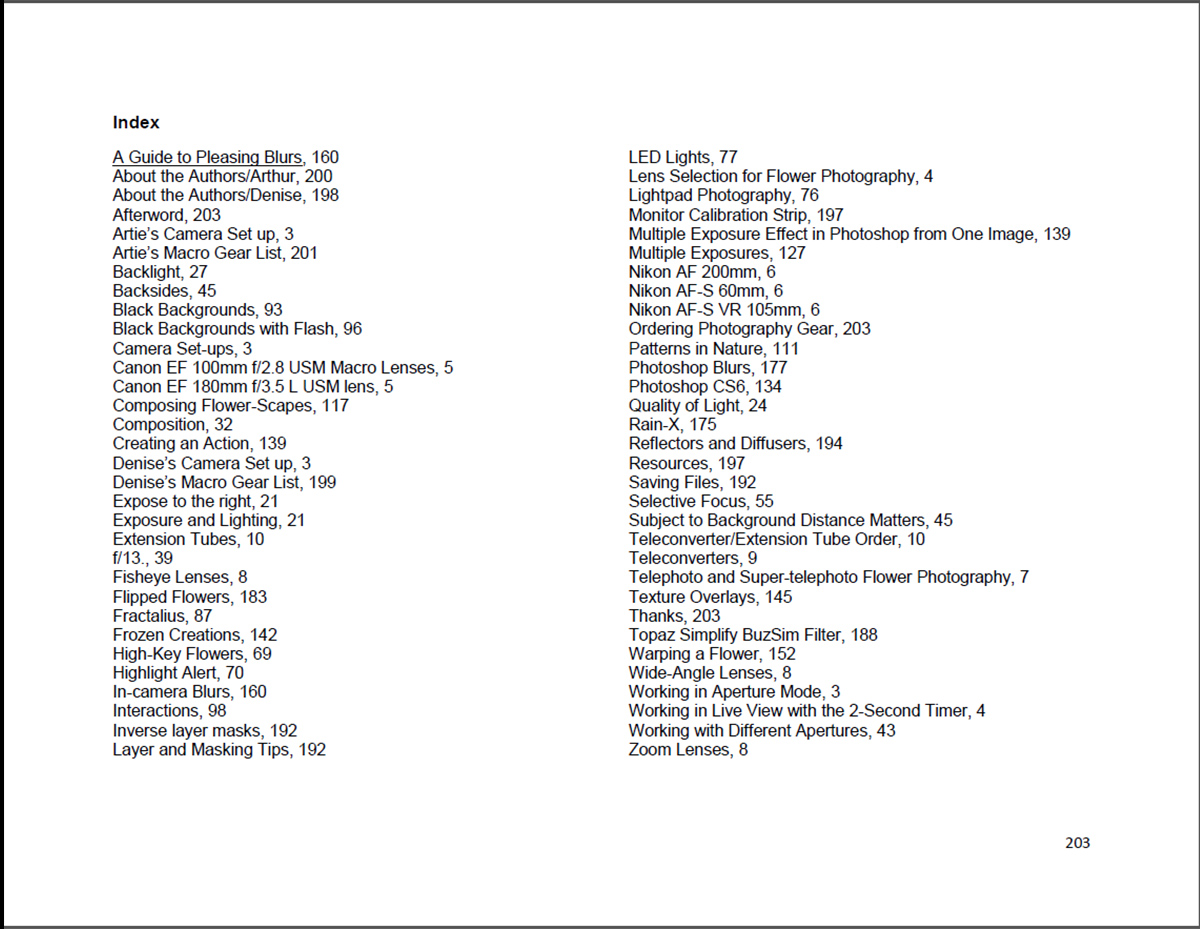
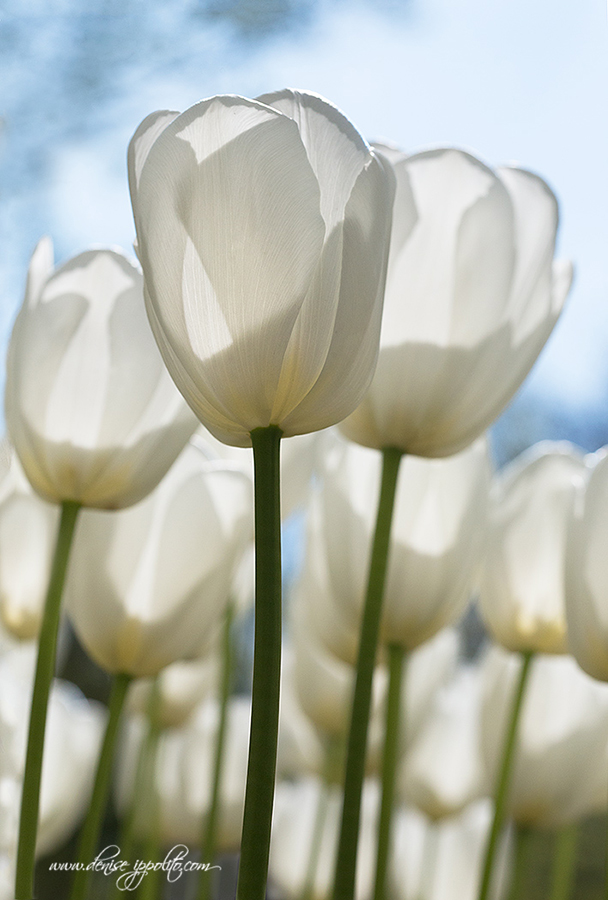
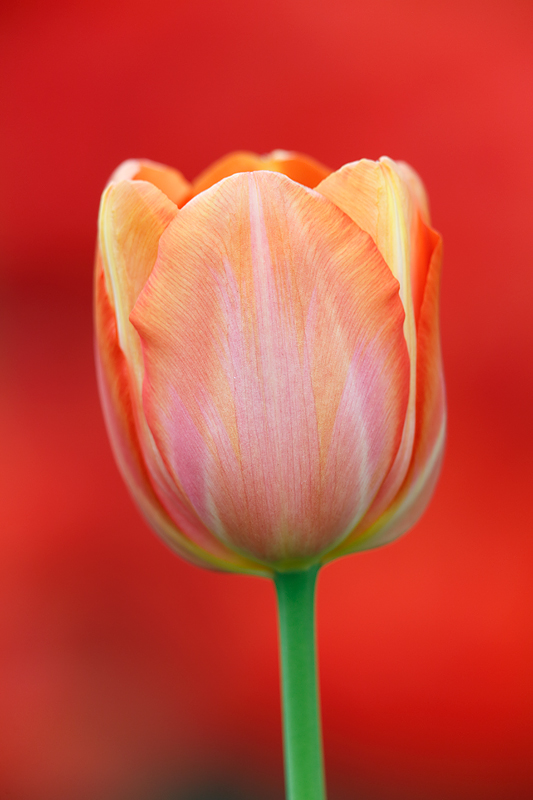
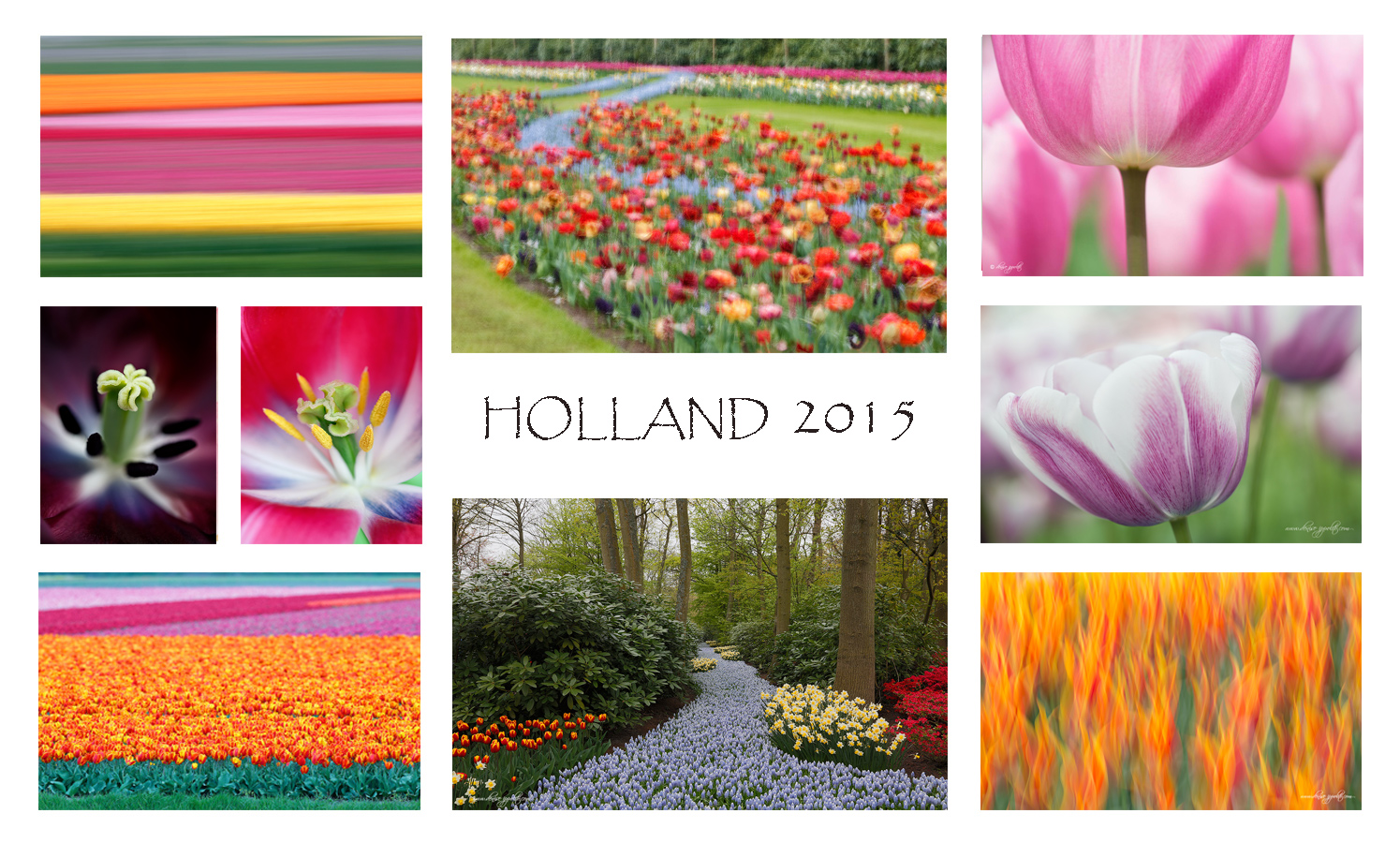
While I find both images pleasing, I greatly prefer Image #1 over Image #2 for several reasons:
1) To me, Image #1, with the pistil and front stamen both in focus gives it more of a 3D quality.
2) The arrangement of the stamens, to me, is more pleasing in Image #1.
3) In Image #1, the eye is led from the lower right out-of-focus petal through to the pistil and on out the upper left, whereas the arrangement of the stamens acts as a gateway, leading the eye dead into the center the center of the image (pistil) in Image #2, where your eye tends to stop.
For me, reason 3) is the main reason I prefer Image #1 [greatly] over Image #2.
Chris
Thanks for chiming in Chris. I will address the issue in a future blog post :).
artie
Hi Artie,
I think that the chief advantage of using a collar on the 100mm macro is to be able to easily switch between vertical and horizontal framing. While I agree that when using a tele or other lens that is heavier than the camera body it is best to use a lens collar to minimize stressing the lens mount, I do not think the same rule works if the camera body is heavier than the lens. It seems to me that if the camera body is heavier than the lens, as your Canon 1 series bodies are heavier than the 100mm macro, there will be less stress on the lens mount by mounting the camera body on the tripod.
Have a great day and as always, thanks for all your efforts to make us better photographers.
Mark Friedman
Thanks Mark. You are for the most part correct, and yes, working with a tripod ring (or collar) when you are on a tripod is far more efficient then mounting the camera body. In addition, having the tripod collar allows me to keep on using my Mongoose M3.6 instead of having to go to the Giotto’s tiny ballhead as I used to have to do. Even in cases where the body is heavier than the lens there is little to no stress on the mount due to the fact that the fulcrum arm is so short and the rig balances nicely. Folks should of course have the mounting plate positioned so that the rig can go as far forward in the clamp as possible, that to achieve the best balance. Using a ballhead achieving perfect balance is not possible; ballhead flop is gonna get you every time :).
Thanks for your kind words and YAW. artie